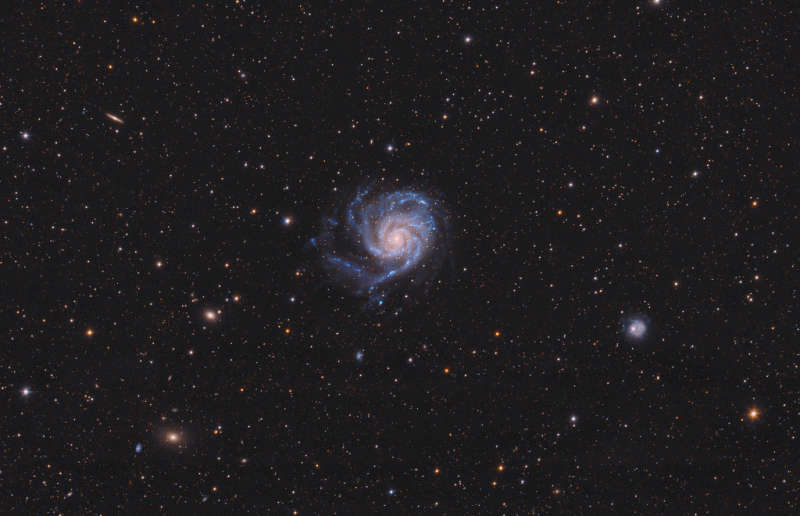Credit & Copyright: Christoph Kaltseis,
CEDIC 2019
Explanation:
Big, beautiful spiral galaxy M101 is one of the last
entries in Charles
Messier's famous catalog, but definitely not
one
of the least.
About 170,000 light-years across, this galaxy is enormous,
almost twice the size of our own Milky Way galaxy.
M101 was also one of the original
spiral
nebulae observed by Lord Rosse's large
19th
century
telescope, the Leviathan of Parsontown.
M101 shares
this modern telescopic field of view with more distant background
galaxies, foreground stars within the Milky Way, and
a companion
dwarf galaxy
NGC 5474 (lower right).
The colors of the Milky Way
stars can also be
found in the starlight from the large island universe.
Its core is dominated by light from cool yellowish stars.
Along
its grand design spiral arms are the blue colors of hotter, young stars
mixed with obscuring dust lanes and pinkish star forming regions.
Also known as the
Pinwheel Galaxy,
M101 lies within
the boundaries of the northern constellation Ursa Major,
about 23
million light-years away.
Its companion NGC 5474 has likely been distorted by its past gravitational
interactions with the dominant M101.
1999 2000 2001 2002 2003 2004 2005 2006 2007 2008 2009 2010 2011 2012 2013 2014 2015 2016 2017 2018 2019 2020 2021 2022 2023 2024 2025 |
Январь Февраль Март Апрель Май Июнь Июль Август Сентябрь Октябрь Ноябрь Декабрь |
NASA Web Site Statements, Warnings, and Disclaimers
NASA Official: Jay Norris. Specific rights apply.
A service of: LHEA at NASA / GSFC
& Michigan Tech. U.
|
Публикации с ключевыми словами:
M 101 - spiral galaxy - спиральная галактика
Публикации со словами: M 101 - spiral galaxy - спиральная галактика | |
См. также:
Все публикации на ту же тему >> | |
